Kirby Larson's Blog, page 17
April 10, 2014
From the Office of the Future of Reading
Please join me in welcoming today's guest blogger, Stacy Mozer . Stacy is a third grade teacher in Connecticut. She is also a middle grade writer and the Critique Group Coordinator for New Egland SCBWI. You can read more from Stacy on her website or you can follow her on twitter at @SMozer and @SportyGirlBooks.
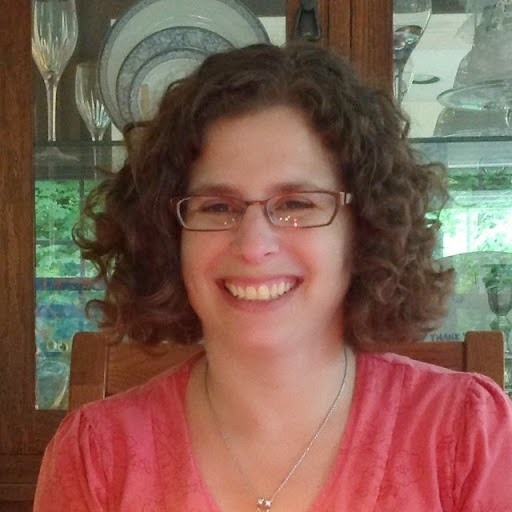 Stacy Barnett Mozer
Stacy Barnett Mozer
10 Ways to Get Kids Excited About PoetryBy Stacy Barnett Mozer
It’s poetry month! Over the years I have found many ways to get kids to love poetry. Here are my top 10 favorites to use in the classroom, but you can use this tips at home with your own children too.
1. Share mentor textsLove That Dog by Sharon Creech is a novel in verse about a boy name Jack who hates poetry. Every year I read this book aloud during my poetry unit. In the book, Jack writes to his teacher about the poems being shared with his class. Over the course of the book, Jack becomes more and more poetic and starts using the mentor poems to tell the story of his beloved pet. Not only is this book an amazing read because it gets kids to love poetry (especially the boys who feel like Jack), it also comes with all the mentor poems in the back for you to use with your class or child. But any poem can be a mentor text. You just have to love it.
2. Read poems aloudPoetry is meant to be read aloud. After we go over how to read aloud and I share lots of examples, my students record themselves reading poetry. Then they listen to their recordings to see if they sound like they are reading a poem or a story (they want it to sound like a story). They rerecord their poem as many times as they need to until it sounds natural and their line breaks are based on meaning instead of only being based on the rhyme.
3. Make it a performanceMy students love performing poetry. They come up with elaborate scenes, props, and even add music at times. The more fun they can have with the poetry, the more they will love it.
4. Invite in poetsWe are very lucky to have Ted Scheu the Poetry Guycome to our school every year. He makes poetry fun and leads workshops on revision. But if you can’t invite a published poet, ask parents to come in and share favorites.
5. Turn Poetry into ArtMy students love concrete poems. They can either write the poem in the outline of a shape or create a shape using words. Here is an example of each from Ken Nesbitt’s Poetry Site. There are some books with examples of concrete poems out there (Love that Dog has two) but I’ve found that the best place to find amazing concrete poems is to Google them under images. I share them on my Smartboard or make copies of my favorites.
6. Make it personalKids sometimes get stuck on what to write about. The way I handle this is to have them start by selecting a seed (a topic to explore). As I teach about different types of poetry, they use their seed to make their poems personal. At the end of the unit they make a tiny poetry book with some of their favorites.
7. CelebrateEvery year my school has a poetry picnic. The parents bring blankets and food and sit with their children as they take turns reading aloud a favorite poem. Some are copied from books but others the students write for the event. It is a lot of fun, especially when the weather is nice.
8. Get outsideApril is the perfect month to get outdoors. I have my students take their writer’s notebooks outside at recess, sitting under trees on a nice day, and by the window when it rains. Nature is full of poetry and you don’t have to look hard to find it.
9. Make lots of listsPoetry is easy for every child to write, even those who hate writing. The best way to prove this to a child is to show them how to make list poems. Here’s one for this post:
Excited About Poetry
Sharing Mentor TextsReading poems aloudMaking it a performanceInviting In PoetsTurning Poetry into ArtMaking it PersonalCelebratingGetting OutsideMaking Lots of ListsEnjoying it together!
10. Enjoy it togetherThe last thing to do to get kids excited about poetry is to be excited about poetry. Share your favorites. Write poetry too. Don’t worry if you aren’t a great poet. Taking risks in front of kids helps them take risks.
Have a great Poetry Month!!
Stacy, your post even gets this poetry-phobe brave enough to dive in! I love reading it, but am a bit nervous about writing it. Thanks for the encouragement, and for all the specific tips. Especially love the tip about reading aloud -- so important with poetry!
Published on April 10, 2014 05:30
April 9, 2014
Wednesday Wisdom
I've been asked if I research first, last or in the middle. The answer is yes.
Karen Cushman (SCBWI-LA conference, circa 2003)
Karen Cushman (SCBWI-LA conference, circa 2003)
Published on April 09, 2014 05:30
April 8, 2014
From the Office of the Future of Reading
Please join me in welcoming today's guest blogger, Michelle Haseltine. Michelle is in her nineteenth year as a teacher, currently spending her days with sixth graders in Loudoun County, Virginia. Michelle is a Teacher-Consultant with the Northern Virginia Writing Project, and a facilitator for Literacy Journey. She can usually be found with a book in her hand or doodling in her notebook as she continues to search for the book she’s destined to write. She can be found on twitter, blogging for herself and blogging with her students.
 Michelle Haseltine
Michelle Haseltine
Six years ago, I moved from teaching fifth grade to teaching sixth grade. I thought my teaching life would look different...and it did, just not the way I envisioned. When I was considering a change to middle school, I decided to visit some English classrooms. The ones I saw were sparsely decorated and in none of those classrooms did I see a classroom library, so as I packed up my fifth grade classroom and my extensive library, I donated most of the books to the teacher taking my place.
As the days passed in middle school, I quickly realized I’d made a grave mistake. My students needed books. The bi-weekly twenty minute trip to the school library was not nearly enough for them or for me...so I started all over again.
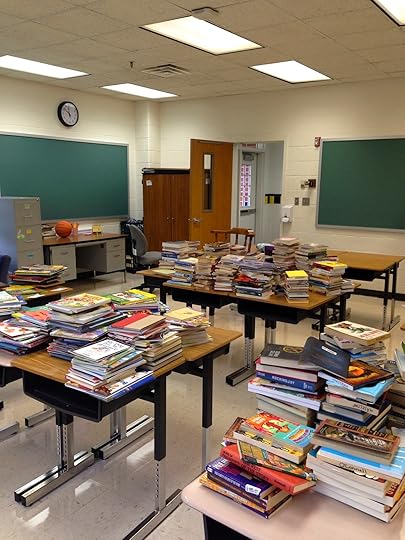
Book by book, I rebuilt my classroom library. I begged for donations. I asked friends and family for books, especially those who have kids older than middle school. I asked students to bring in books they wanted to donate (I also add a sticker that identifies the student who donated the book). I asked parents for donations.
Scholastic book orders added so many books to my library: If parents ordered online, the class got a free book. I’d spend time book-talking books in the book order and ask for donations. I used every Scholastic point I could. I found warehouse sales, made friends with the owner of the used bookstore, went to library sales and became a Prime member for Amazon. Even on vacation, I found advanced reader copies at a bookstore. When I told the owner that I was a teacher, she let me take four instead of only one. Tip: Go to local thrift shops. Bring your teacher id. Explain what you’re doing. ASK! It’s the key to building a great library.
Books, books, books. I started with three shelves of books. Six years later, I have around a thousand books in my classroom library...and it’s still growing.
Why? We have a beautiful school library, which we visit weekly, so why do we need a vibrant, growing classroom library?!?! I believe the environment sets expectations. Walking into my classroom, everyone knows reading is important.
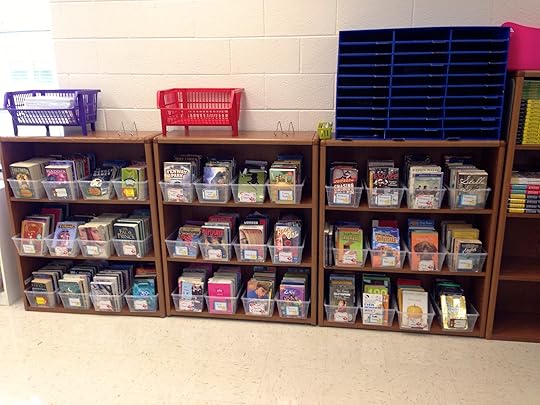
My students are surrounded by books. They are immersed in books. The classroom library is a daily reminder of what our goals are: We are readers. Reading is an expectation. Reading is fun!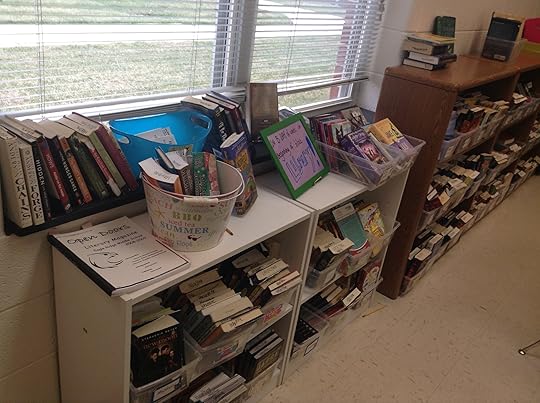
Today, we have ten bookcases filled to overflowing. (I have my professional books on half of one shelf. I rotate those from home when I need them.) We have window sills holding books, computer carts holding books, books on the chalk tray...books, books, books.
Thanks you, Michelle, for being such an avid supporter of books and sharing that passion with your students! No one would be able to walk into your classroom and not figure out what priority one was -- brava!
 Michelle Haseltine
Michelle Haseltine Six years ago, I moved from teaching fifth grade to teaching sixth grade. I thought my teaching life would look different...and it did, just not the way I envisioned. When I was considering a change to middle school, I decided to visit some English classrooms. The ones I saw were sparsely decorated and in none of those classrooms did I see a classroom library, so as I packed up my fifth grade classroom and my extensive library, I donated most of the books to the teacher taking my place.
As the days passed in middle school, I quickly realized I’d made a grave mistake. My students needed books. The bi-weekly twenty minute trip to the school library was not nearly enough for them or for me...so I started all over again.

Book by book, I rebuilt my classroom library. I begged for donations. I asked friends and family for books, especially those who have kids older than middle school. I asked students to bring in books they wanted to donate (I also add a sticker that identifies the student who donated the book). I asked parents for donations.
Scholastic book orders added so many books to my library: If parents ordered online, the class got a free book. I’d spend time book-talking books in the book order and ask for donations. I used every Scholastic point I could. I found warehouse sales, made friends with the owner of the used bookstore, went to library sales and became a Prime member for Amazon. Even on vacation, I found advanced reader copies at a bookstore. When I told the owner that I was a teacher, she let me take four instead of only one. Tip: Go to local thrift shops. Bring your teacher id. Explain what you’re doing. ASK! It’s the key to building a great library.
Books, books, books. I started with three shelves of books. Six years later, I have around a thousand books in my classroom library...and it’s still growing.
Why? We have a beautiful school library, which we visit weekly, so why do we need a vibrant, growing classroom library?!?! I believe the environment sets expectations. Walking into my classroom, everyone knows reading is important.

My students are surrounded by books. They are immersed in books. The classroom library is a daily reminder of what our goals are: We are readers. Reading is an expectation. Reading is fun!

Today, we have ten bookcases filled to overflowing. (I have my professional books on half of one shelf. I rotate those from home when I need them.) We have window sills holding books, computer carts holding books, books on the chalk tray...books, books, books.
Thanks you, Michelle, for being such an avid supporter of books and sharing that passion with your students! No one would be able to walk into your classroom and not figure out what priority one was -- brava!
Published on April 08, 2014 05:30
April 4, 2014
Friend Friday
I met Maureen McQuerry at the very first Pacific Northwest Booksellers Trade Show I ever attended. Her warm smile drew this newbie to her like a moth; she not only showed me the ropes, she even connected me with her event coordinator, Michele Kophs, Provato Author Events, (also known as Wonder Woman) with whom I have now worked for the past many years. I loved Maureen's wonderful YA book, The Peculiars, and was thrilled when she agreed to take time out to visit with us here. Take it away, Maureen!
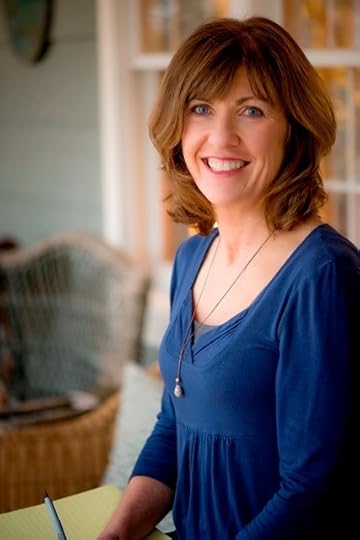 Maureen McQuerry
Maureen McQuerry
Subtext in the Details
Picture this. At the edge of the meadow is a fence. It has been standing a long time, so long that every post leans, often at a different angle. Between the posts barbed wire stretches and in a few places sags. When you get close enough, you can see remnants: a strand of hair, a string a small piece of cloth caught in the barbs. The details of what has passed by are in held in place for us to examine.
I have been thinking about the subtext of details. How the small things our characters pay attention to and point out to the reader can say more than the keenest dialogue. They happen below the text.
Subtext works below spoken dialogue. It’s the unspoken emotions, conflicts, tensions that fuel our characters. And the unspoken often speaks louder than the spoken. Subtext is what’s not said. It’s the characters actions and responses. But subtext can also be created by what our characters notice, carefully selected details that make the particular universal. These details let us in our characters thoughts even when they don’t speak a word.
Ralph Fletcher offers wise advice in What a Writer Needs: “Don’t write about senility or a man losing his ability to take care of himself. Write about lost belt loops.”
How we can choose just the right detail to show what our character thinks and believes at that point in time without the character telling us? In the wonderful and bleak Winter’s Bone, Ree Dolly thinks about the last time she saw her father. “Walnuts were thumping to the ground in the night like stalking footsteps of some large thing that never quite came into view…” The detail of the walnuts falling, their sound in the night builds that sense of the ominous that permeates the whole book.
Imagine two co- workers are arguing, a snarky he said/ she said kind of fight, and all the while he keeps glancing at the ticket stubs on her desk, the ones she saved from her big weekend date. As readers we build an idea of the subtext in that argument.
If you could imagine the details of your scene caught in the barbed wire fence I described, what would they be? What would the things your character notices be shouting or whispering to the reader?
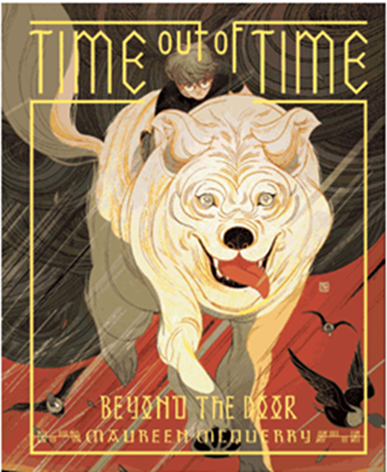
Maureen divides her time between writing, teaching and presenting. Her most recent book is Beyond the Door(Abrams/Amulet), the first is a MG duo that combines, Celtic myth, shapeshifters and a secret code in a coming of age story. The adventure continues in The Telling Stone 2015.
Her YA novel, The Peculiars, is an ALA Best Book for Young Adult Readers 2013, Bank Street and Horn Book recommended book and a winner of the Westchester Award. She teaches writing at Columbia Basin College, loves giving author talks in schools and at conferences. When she’s not writing or reading, she’s always hoping for a real life mystery or adventure.
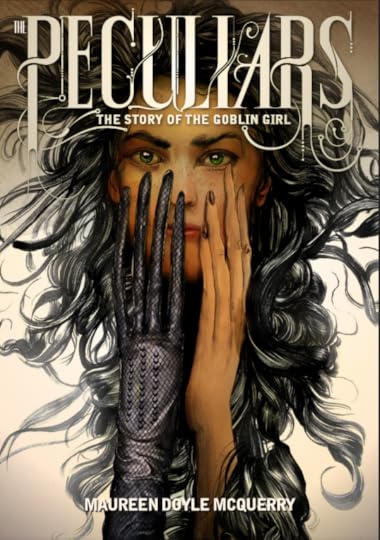
 Maureen McQuerry
Maureen McQuerrySubtext in the Details
Picture this. At the edge of the meadow is a fence. It has been standing a long time, so long that every post leans, often at a different angle. Between the posts barbed wire stretches and in a few places sags. When you get close enough, you can see remnants: a strand of hair, a string a small piece of cloth caught in the barbs. The details of what has passed by are in held in place for us to examine.
I have been thinking about the subtext of details. How the small things our characters pay attention to and point out to the reader can say more than the keenest dialogue. They happen below the text.
Subtext works below spoken dialogue. It’s the unspoken emotions, conflicts, tensions that fuel our characters. And the unspoken often speaks louder than the spoken. Subtext is what’s not said. It’s the characters actions and responses. But subtext can also be created by what our characters notice, carefully selected details that make the particular universal. These details let us in our characters thoughts even when they don’t speak a word.
Ralph Fletcher offers wise advice in What a Writer Needs: “Don’t write about senility or a man losing his ability to take care of himself. Write about lost belt loops.”
How we can choose just the right detail to show what our character thinks and believes at that point in time without the character telling us? In the wonderful and bleak Winter’s Bone, Ree Dolly thinks about the last time she saw her father. “Walnuts were thumping to the ground in the night like stalking footsteps of some large thing that never quite came into view…” The detail of the walnuts falling, their sound in the night builds that sense of the ominous that permeates the whole book.
Imagine two co- workers are arguing, a snarky he said/ she said kind of fight, and all the while he keeps glancing at the ticket stubs on her desk, the ones she saved from her big weekend date. As readers we build an idea of the subtext in that argument.
If you could imagine the details of your scene caught in the barbed wire fence I described, what would they be? What would the things your character notices be shouting or whispering to the reader?

Maureen divides her time between writing, teaching and presenting. Her most recent book is Beyond the Door(Abrams/Amulet), the first is a MG duo that combines, Celtic myth, shapeshifters and a secret code in a coming of age story. The adventure continues in The Telling Stone 2015.
Her YA novel, The Peculiars, is an ALA Best Book for Young Adult Readers 2013, Bank Street and Horn Book recommended book and a winner of the Westchester Award. She teaches writing at Columbia Basin College, loves giving author talks in schools and at conferences. When she’s not writing or reading, she’s always hoping for a real life mystery or adventure.

Published on April 04, 2014 05:30
April 3, 2014
From the Office of the Future of Reading
Please join me in welcoming today's guest blogger, Craig Seasholes. Craig is a Teacher Librarian at Sanislo Elementary School, in Seattle, Washington. He is also the past president of WLMA. You can read more from Craig on his blog or on Twitter where he especially encourages Seattle Public School librarians to follow #seattleTL.
 Craig SeasholesA LIT-TL* Poetry Adventure
Craig SeasholesA LIT-TL* Poetry AdventureAs April blooms each year, I celebrate my role as an elementary school librarian with an open invitation to join in the joy of reading, writing and publishing poetry.
This year a pair of enthusiastic student teachers have gathered “where I’m from” poems from our 5th graders into a print, ePub and audio anthology to kick off National Poetry Month with an after school family potluck and poetry celebration.
Projects like this bloom quickly in our “small school with big ideas.” Here’s how this one grew during this March at Sanislo:
In late February, UW student-teachers Cai Wren Barber and Jared Cole asked me for suggestions of poems that might help inspire a poetry project. Big open questions like this are exactly the sort of invitation that I love, and after a few moment’s pause (*sound of wheels turning*) we walked to our poet-tree collection and I started reaching for resources.
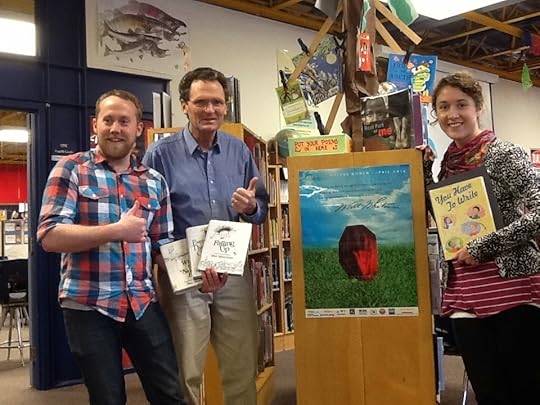 Jared Cole, Craig Seasholes and Cai Wren Barber
Jared Cole, Craig Seasholes and Cai Wren Barberstanding at the Sanislo Poet-Tree
Sylvia Vardell and Janet Wong’s Poetry Friday Anthology was the first book I pulled and Janet’s You Have to Write practically jumped off the shelf and into the mix. “This is a perfect place to start.” Cai and Jared were off and running, leading students with a mix of inspiration, structure, writing, revision and illustration.
(video insert? I have video clip of Cai telling Janet thank you for this book, if you want to insert into blog?)
Helping teachers and students collect their poems into booklets is ever more fun with access to ePub tools.
Crumpled and messy drafts lay scattered like leaves after 5th graders type their finished drafts onto computer in the library lab. Clever Mr. Cole whipped out his smartphone and photographed student’s drawings, edited and dropped them onto the facing pages of out quickly assembled electronic chapbook. I had students create colorful electronic images using a Paint program, which Ms. Barber stitched together into a mosaic cover for the whole affair. Desktop publishing let me upload the whole thing into an Issuu e-pub, and link it to the school website.
Meanwhile, back in the library tech lab, I had also introduced students to free and robust Audacity audio recording and editing software. The fifth graders each recorded their poems, clipped and adjusted volumes to get roughly consistent 40 second clips which I could then blend into a single audio file to accompany the anthology and eBook.
Check it out on our Sanislo library website
Wow, Craig, this is an awesome way to celebrate Poetry month! I am sure your suggestions will inspire others to meld technology and poetry, too.
Published on April 03, 2014 05:30
April 2, 2014
Wednesday Wisdom
(thanks to a deep-clean of my office, I've uncovered notes from writing workshops and conferences from years past. For the next seven weeks, Wednesday Wisdoms will come from those notes)
The historical novel is part history and part literary CPR.
Sid Fleischman (SCBWI LA conference 2003 or 2004)
The historical novel is part history and part literary CPR.
Sid Fleischman (SCBWI LA conference 2003 or 2004)
Published on April 02, 2014 05:30
April 1, 2014
From the Office of the Future of Reading
Please help me welcome today's guest blogger, Jone Rush MacCulloch. Jone is a teacher-librarian during the school year, who writes, reads, and blogs (personal blog here and school blog here) the rest of the time. She’d rather write poetry than memorize it. She has had haiku published in Acorn; A Journal of Contemporary Haiku and the Haiku Society of American Members' Anthology. In 2012, she self-published a small collection of poetry and photography, Solace in Nature, and is currently working on a novel in verse. Helping with SCBWI-OR book sales is one way Jone gives back to a great writing community. You can follow Jone on Twitter.
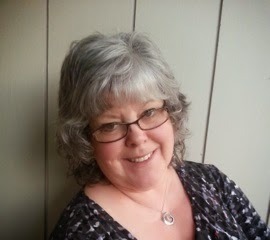
Why Poetry Speaks to My Heart
Happy April Fool's Day. I am no fool when it comes to poetry. It's a part of my tapestry, my DNA. My grandmother and grandfather were poets. Here are ten reasons why poetry speaks to my heart:
1. Communication. Poetry is among the oldest forms of communicating. One only needs to read The Odyssey or some of Basho's haiku to be filled with a sense of wonder how cultures around the world found poetry as a way to express oral history, prayers, and stories.
2. Word play. The flow of words and the images created in poems. I love playing with words in a brief space that creates a thought than lingers after you have closed a book.
3. Pantoums and haiku. These two poetry forms are among my favorite to write. Haiku is the art of observation and the unexpected in three short lines. Pantoums: four line stanzas with a repeating pattern. Originally from Malaysia and at times sung. Write a pantoum and then cull a haiku from it.
4. Poetry Pairings. In the classroom, pairing a poem with at science or social studies lessons brings a different perspective on the topic to the table. Poetry pairings are featured at Check It Out, my school blog, the third Friday of every month.
5. Poetry Friday . These are my people. What better place is there to share poetry around the world? It's like a big virtual poetry reading every Friday to share. Plus it's a fabulous venue for student writers to share their work.
6. Comfort. A poem can reach you when times are difficult . I lost a very good friend in December from cancer. A poetry friend sent a poem that comforted her once and itwas a much needed gift for me.
7. Reachable. Students may struggle with reading or writing but when it comes to poetry, they usually get it. Perhaps it's the white space, the smaller chunks of information, or the way words are arranged on a page that makes it accessible.
8. Writing Mentors. Poetry is a fabulous writing mentor. Some of my favorite mentors include William Stafford, Naomi Shihab Nye, Valerie Worth, and Joyce Sidman.
9. Poetry challenges. Last month I was one of sixty-four 'authletes' who participated in Ed DeCarias' March Madness Poetry. We were given a word, and thirty-six hours to write a poem and then the world voted for their favorites. This challenge pushed my writing to a new level by making me think of structures and rhyme schemes.
10. Math and Poetry. I hate math. But when I write poems using different forms and structures, I am using math without thinking about math. There's a certain musicality that comes with writing in a structured form.
How to Write a Poem
Rise before dawn gathering wordsThose juicy, succulent imagesThe aromatic ones which crinkle your nosereturning you to the shadow places.
Those juicy, succulent imagesFound in the crevices of rememberingreturning you to the shadow places.Throwing the words into the calypso coral sky
Found in the crevices of rememberingAn unexpected arrangement for early morningThrowing the words into the calypso coral skywatching them flitter-flutter, landing on prayer flags.
An unexpected arrangement for early morningWaking before dawn, searching for words,watching them flitter-flutter, landing on prayer flagsAs the night watchers slip away
Waking before dawn, searching for words,The aromatic ones which crinkle your noseAs the night watchers slip awayRise before dawn, gathering words
By Jone Rush MacCulloch, March 2104
Thank you Jone for kicking off National Poetry Month so beautifully and poetically!

Why Poetry Speaks to My Heart
Happy April Fool's Day. I am no fool when it comes to poetry. It's a part of my tapestry, my DNA. My grandmother and grandfather were poets. Here are ten reasons why poetry speaks to my heart:
1. Communication. Poetry is among the oldest forms of communicating. One only needs to read The Odyssey or some of Basho's haiku to be filled with a sense of wonder how cultures around the world found poetry as a way to express oral history, prayers, and stories.
2. Word play. The flow of words and the images created in poems. I love playing with words in a brief space that creates a thought than lingers after you have closed a book.
3. Pantoums and haiku. These two poetry forms are among my favorite to write. Haiku is the art of observation and the unexpected in three short lines. Pantoums: four line stanzas with a repeating pattern. Originally from Malaysia and at times sung. Write a pantoum and then cull a haiku from it.
4. Poetry Pairings. In the classroom, pairing a poem with at science or social studies lessons brings a different perspective on the topic to the table. Poetry pairings are featured at Check It Out, my school blog, the third Friday of every month.
5. Poetry Friday . These are my people. What better place is there to share poetry around the world? It's like a big virtual poetry reading every Friday to share. Plus it's a fabulous venue for student writers to share their work.
6. Comfort. A poem can reach you when times are difficult . I lost a very good friend in December from cancer. A poetry friend sent a poem that comforted her once and itwas a much needed gift for me.
7. Reachable. Students may struggle with reading or writing but when it comes to poetry, they usually get it. Perhaps it's the white space, the smaller chunks of information, or the way words are arranged on a page that makes it accessible.
8. Writing Mentors. Poetry is a fabulous writing mentor. Some of my favorite mentors include William Stafford, Naomi Shihab Nye, Valerie Worth, and Joyce Sidman.
9. Poetry challenges. Last month I was one of sixty-four 'authletes' who participated in Ed DeCarias' March Madness Poetry. We were given a word, and thirty-six hours to write a poem and then the world voted for their favorites. This challenge pushed my writing to a new level by making me think of structures and rhyme schemes.
10. Math and Poetry. I hate math. But when I write poems using different forms and structures, I am using math without thinking about math. There's a certain musicality that comes with writing in a structured form.
How to Write a Poem
Rise before dawn gathering wordsThose juicy, succulent imagesThe aromatic ones which crinkle your nosereturning you to the shadow places.
Those juicy, succulent imagesFound in the crevices of rememberingreturning you to the shadow places.Throwing the words into the calypso coral sky
Found in the crevices of rememberingAn unexpected arrangement for early morningThrowing the words into the calypso coral skywatching them flitter-flutter, landing on prayer flags.
An unexpected arrangement for early morningWaking before dawn, searching for words,watching them flitter-flutter, landing on prayer flagsAs the night watchers slip away
Waking before dawn, searching for words,The aromatic ones which crinkle your noseAs the night watchers slip awayRise before dawn, gathering words
By Jone Rush MacCulloch, March 2104
Thank you Jone for kicking off National Poetry Month so beautifully and poetically!
Published on April 01, 2014 05:30
March 31, 2014
Kentucky Monday
A week ago today, I was honored to spend the day at Olmstead School in Olmstead, Kentucky. It was one of those whirlwind, fly-in-on-Sunday-night-fly-out-on-Monday-night trips which are kind of hard on the old body. But this trip was pure balm for the soul.
I flew into Nashville, where uber librarian Jennifer Wilcutt and her buddy, 5th grade teacher Stephanie Alvis, were to pick me up. As I was getting off the plane, Jennifer texted me to look for a black Ford Explorer with UK plates. I texted back asking if she had a British accent. I mean, wouldn't you?
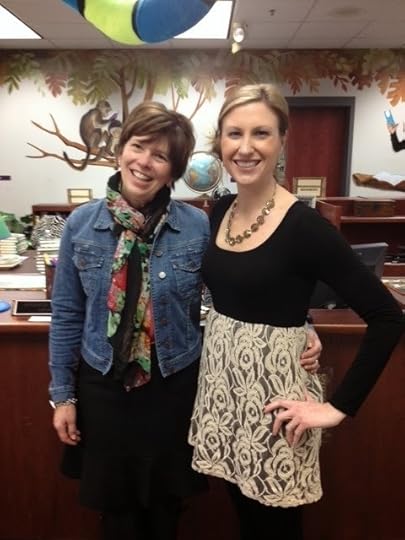 I love Jennifer Wilcutt even if she doesn't have a British accentLuckily, they let me in the car anyway. My husband was chagrined to find out that I had no clue that UK stood for University of Kentucky. (Now I know! Go Wildcats!) Jennifer, Stephanie and I enjoyed dinner together as they peppered me with questions about my books and writing process.
I love Jennifer Wilcutt even if she doesn't have a British accentLuckily, they let me in the car anyway. My husband was chagrined to find out that I had no clue that UK stood for University of Kentucky. (Now I know! Go Wildcats!) Jennifer, Stephanie and I enjoyed dinner together as they peppered me with questions about my books and writing process.
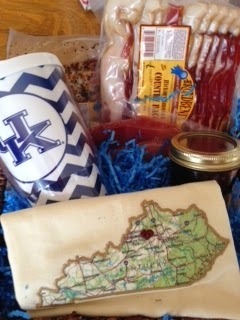 Welcome basket with my "United Kingdom" thermal mug
Welcome basket with my "United Kingdom" thermal mug
Jennifer picked me up the next morning and drove straight to the nearest Starbucks -- talk about Southern hospitality! (she doesn't even drink coffee herself) Then it was on to the school which she describes as in the middle of a cornfield. I wish I had taken a photo: the school is beautiful but not nearly as beautiful as the people inside it.
My first session was with the kindergartners through third graders, who were dying to know more about Nubs so I filled them in. I even showed them a little movie I've made which includes some recent photos of everybody's favorite dog. They all laughed at the one of him dressed up as a Viking fan.

The next group consisted of sixth through eighth graders (what do they feed those kids in Kentucky? Tall, tall, tall!) I always love sharing with this age group about how influential my maternal grandmother was in my becoming a writer. She never went beyond eighth grade herself, but I consider her one of my greatest teachers. However, I do stress the importance of staying in school unless you want to work two jobs like my grandma did.
Another treat of the day: my dear friend Alecia Marcum (Willie Mae Marcum in The Friendship Doll was blessed with her name because of Alecia) drove over from Bowling Green just to say hello. Love, love, love librarians.
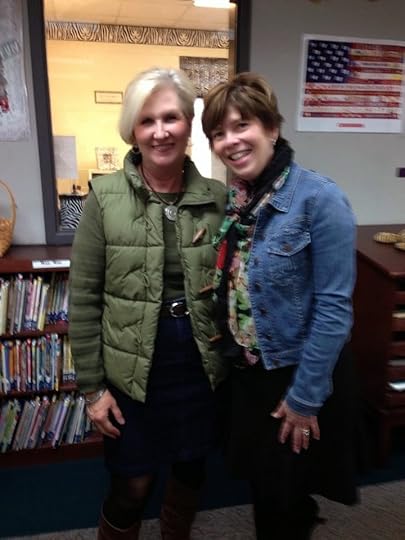 The adorable Alecia Marcum with her biggest fanLunch was shared with a dozen or so fifth and eighth graders who wrote essays about why they wanted to eat lunch with me; I loved reading the winning submissions almost as much as I loved meeting the kids themselves.
The adorable Alecia Marcum with her biggest fanLunch was shared with a dozen or so fifth and eighth graders who wrote essays about why they wanted to eat lunch with me; I loved reading the winning submissions almost as much as I loved meeting the kids themselves.
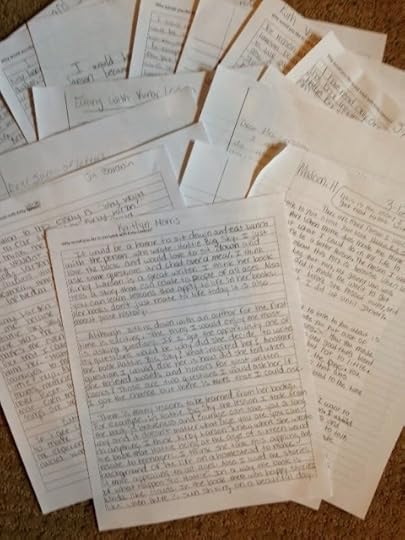 The winning essays
The winning essays
 A writer could get a swelled head reading letters like this!
A writer could get a swelled head reading letters like this!
They were full of questions and I did my best to answer them all before the bell rang and they headed off to their classes. I could tell they were avid readers and good writers -- they asked me a lot of questions about decisions I made as a writer. I was quite impressed.
 My lunch buddies
My lunch buddies
The last group of the day was the smallest, just fourth and fifth graders. Wow, what terrific energy and what great listeners. And, again, the kids kept me on my toes with questions about why I made the choices I did in writing certain scenes. They were especially interested in whether Rooster Jim was inspired by someone I knew and they all thought Hattie Big Sky would make a great movie (I can't disagree with that!).
All too soon, the day was over and I was being whisked off to the airport. Jennifer manned the wheel, but this time principal Ben Kemplin and Social Studies teacher Kathleen Bailey kept us company. Ben could be a tour guide in his spare time! And Kathleen filled me in on some amazing workshops she'd taken through the National Endowment for the Humanities, one of which was in Montana a few years back which was where she'd run across Hattie Big Sky, which she brought to Jennifer, which lead to them wanting me to come to their school.
It took Jennifer and the Olmstead team two years to figure out how to bring me to Kentucky; last spring, thanks to a suggestion from my event coordinator, Michele Kophs, Jennifer applied for and received a Target Foundation grant. In the meantime, Jennifer and the other Olmstead staff extended my books by doing projects with the kids, including making crocheted bookmarks for soldiers deployed in Afghanistan (one intrepid staff member went on eBay and bought 50 crochet hooks for a dollar each). Pretty inspiring.
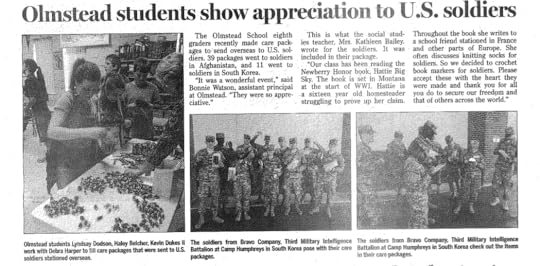
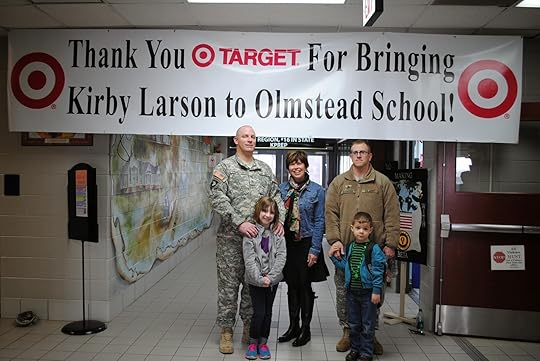
 An honor to have my photo taken these Olmstead dads just back from deployment
An honor to have my photo taken these Olmstead dads just back from deployment
Every time I present at a school, I come home with sweet memories and a full heart. I hope I left a little bit of my passion for reading and writing in the hearts of the students and staff of Olmstead School.
I flew into Nashville, where uber librarian Jennifer Wilcutt and her buddy, 5th grade teacher Stephanie Alvis, were to pick me up. As I was getting off the plane, Jennifer texted me to look for a black Ford Explorer with UK plates. I texted back asking if she had a British accent. I mean, wouldn't you?
 I love Jennifer Wilcutt even if she doesn't have a British accentLuckily, they let me in the car anyway. My husband was chagrined to find out that I had no clue that UK stood for University of Kentucky. (Now I know! Go Wildcats!) Jennifer, Stephanie and I enjoyed dinner together as they peppered me with questions about my books and writing process.
I love Jennifer Wilcutt even if she doesn't have a British accentLuckily, they let me in the car anyway. My husband was chagrined to find out that I had no clue that UK stood for University of Kentucky. (Now I know! Go Wildcats!) Jennifer, Stephanie and I enjoyed dinner together as they peppered me with questions about my books and writing process. Welcome basket with my "United Kingdom" thermal mug
Welcome basket with my "United Kingdom" thermal mugJennifer picked me up the next morning and drove straight to the nearest Starbucks -- talk about Southern hospitality! (she doesn't even drink coffee herself) Then it was on to the school which she describes as in the middle of a cornfield. I wish I had taken a photo: the school is beautiful but not nearly as beautiful as the people inside it.
My first session was with the kindergartners through third graders, who were dying to know more about Nubs so I filled them in. I even showed them a little movie I've made which includes some recent photos of everybody's favorite dog. They all laughed at the one of him dressed up as a Viking fan.

The next group consisted of sixth through eighth graders (what do they feed those kids in Kentucky? Tall, tall, tall!) I always love sharing with this age group about how influential my maternal grandmother was in my becoming a writer. She never went beyond eighth grade herself, but I consider her one of my greatest teachers. However, I do stress the importance of staying in school unless you want to work two jobs like my grandma did.
Another treat of the day: my dear friend Alecia Marcum (Willie Mae Marcum in The Friendship Doll was blessed with her name because of Alecia) drove over from Bowling Green just to say hello. Love, love, love librarians.
 The adorable Alecia Marcum with her biggest fanLunch was shared with a dozen or so fifth and eighth graders who wrote essays about why they wanted to eat lunch with me; I loved reading the winning submissions almost as much as I loved meeting the kids themselves.
The adorable Alecia Marcum with her biggest fanLunch was shared with a dozen or so fifth and eighth graders who wrote essays about why they wanted to eat lunch with me; I loved reading the winning submissions almost as much as I loved meeting the kids themselves.  The winning essays
The winning essays A writer could get a swelled head reading letters like this!
A writer could get a swelled head reading letters like this!They were full of questions and I did my best to answer them all before the bell rang and they headed off to their classes. I could tell they were avid readers and good writers -- they asked me a lot of questions about decisions I made as a writer. I was quite impressed.
 My lunch buddies
My lunch buddiesThe last group of the day was the smallest, just fourth and fifth graders. Wow, what terrific energy and what great listeners. And, again, the kids kept me on my toes with questions about why I made the choices I did in writing certain scenes. They were especially interested in whether Rooster Jim was inspired by someone I knew and they all thought Hattie Big Sky would make a great movie (I can't disagree with that!).
All too soon, the day was over and I was being whisked off to the airport. Jennifer manned the wheel, but this time principal Ben Kemplin and Social Studies teacher Kathleen Bailey kept us company. Ben could be a tour guide in his spare time! And Kathleen filled me in on some amazing workshops she'd taken through the National Endowment for the Humanities, one of which was in Montana a few years back which was where she'd run across Hattie Big Sky, which she brought to Jennifer, which lead to them wanting me to come to their school.
It took Jennifer and the Olmstead team two years to figure out how to bring me to Kentucky; last spring, thanks to a suggestion from my event coordinator, Michele Kophs, Jennifer applied for and received a Target Foundation grant. In the meantime, Jennifer and the other Olmstead staff extended my books by doing projects with the kids, including making crocheted bookmarks for soldiers deployed in Afghanistan (one intrepid staff member went on eBay and bought 50 crochet hooks for a dollar each). Pretty inspiring.


 An honor to have my photo taken these Olmstead dads just back from deployment
An honor to have my photo taken these Olmstead dads just back from deploymentEvery time I present at a school, I come home with sweet memories and a full heart. I hope I left a little bit of my passion for reading and writing in the hearts of the students and staff of Olmstead School.
Published on March 31, 2014 05:30
March 29, 2014
Sky Bars
When I wrote The Fences Between Us: The Diary of Piper Davis (Dear America, Scholastic), I gave Piper a sweet tooth for Sky Bar candy bars because those had been my mom's favorites when she was a kid. It was just one of those fun little insider things that you include in a book but you don't think about much.

Until you get a photo like this one from Katelynn of Botkins Ohio who found Sky Bars (they still make them!) at her local gas station.
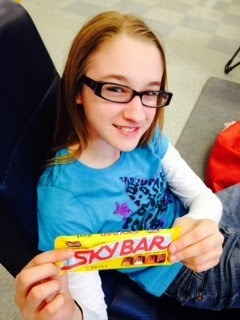
Katelynn's reading teacher, the amazing Michele Meyer, emailed me to say that they've cleaned out the local supply. Sky Bars are now the hot commodity at Botkins School and will be awarded to some super readers during their Fun Friday events.
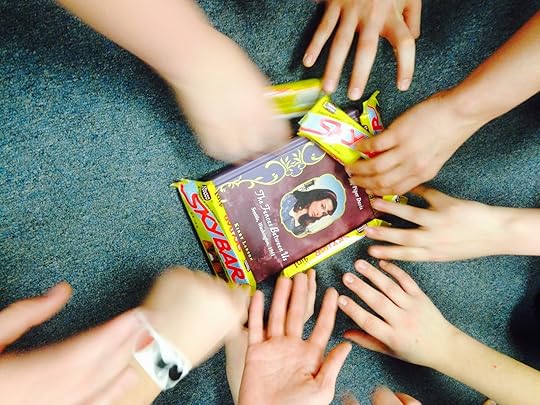
You can't plan connections like this. I love it!

Until you get a photo like this one from Katelynn of Botkins Ohio who found Sky Bars (they still make them!) at her local gas station.

Katelynn's reading teacher, the amazing Michele Meyer, emailed me to say that they've cleaned out the local supply. Sky Bars are now the hot commodity at Botkins School and will be awarded to some super readers during their Fun Friday events.

You can't plan connections like this. I love it!
Published on March 29, 2014 12:44
March 28, 2014
Friend Friday
Please welcome Linda Joy Singleton to the blog today. I met Linda Joy eons ago at a North Central CA SCBWI (Society of Children's Book Writers and Illustrators) conference, when I was an unpublished author. She is one of the hardest working and most persistent writers I know and I am delighted to host her here today, celebrating something entirely new and different!
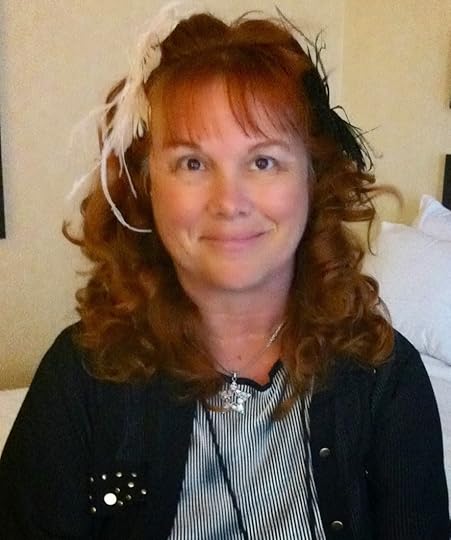 Linda Joy Singleton
Linda Joy Singleton
FOLLOWING AN IDEA TO A NEW GENRE
In 2009 I finished the final book in my young adult DEAD GIRL trilogy, my THE SEER series continued to gains fans, and I was working on other YA ideas. So why did I suddenly switch gears and write a picture book? It all began with a photograph…. I’d long admired the wonderful picture books by my SCBWI friends. They were so beautifully written and illustrated. I longed to write one of my own but I’d learned the short picture book format was the most difficult to write and I was intimidated. Some of my favorite picture books are less than 300 words—whereas the novel I had just finished was 66,000 words. But then I saw the photograph. I was at an elementary school for a presentation by my writing friend Verla Kay. I sat in the audience with kids and teachers and watched Verla’s power point presentation for the first time. As authors often do, she started off with a photo of herself as a child. In this black and white photo, she and her sister were building a snow dog. The image of the snow dog stuck with me.
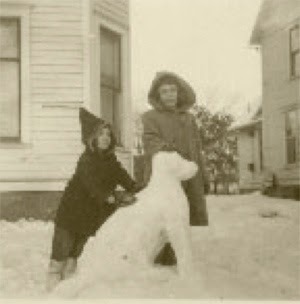
The next day, I was driving with writing friends to an SCBWI event. Words suddenly slammed into my head—all about a snow dog. When we stopped for lunch, I grabbed a napkin and wrote down a story about Ally who wanted a dog more than anything, but dogs made her “achoo.” So she built dogs out of snow and sand.I thought my story was perfect—until I showed it to my friends. They liked it but saw room for improvement. So I listened to their advice then rewrote and rewrote and rewrote. I thought it was perfect so showed to my agent who discussed it with her agency. They liked it but saw room for improvement. So I rewrote and rewrote and rewrote. An editor showed interest and suggested a major improvement of adding two more dogs to teach kids about all the seasons (flower dog and leaf dog). Suddenly my book had another layer--it was educational. But the market had tightened and picture books weren’t selling so it took a while for my book to find a home. Five years after I wrote my picture book, it was published by Albert Whitman with doglicious illustrations by debut illustrator Jess Golden.

Now, I’ve added a new title to my career: picture book author. And I have written several more picture books while I've continued to write middle-grade and YA. I love all my genres. And I hope readers will enjoy my first ever picture book, SNOW DOG, SAND DOG.
Do check out Linda Joy's charming picture book. And for more info and teacher guides, visit her website!
 Linda Joy Singleton
Linda Joy Singleton
FOLLOWING AN IDEA TO A NEW GENRE
In 2009 I finished the final book in my young adult DEAD GIRL trilogy, my THE SEER series continued to gains fans, and I was working on other YA ideas. So why did I suddenly switch gears and write a picture book? It all began with a photograph…. I’d long admired the wonderful picture books by my SCBWI friends. They were so beautifully written and illustrated. I longed to write one of my own but I’d learned the short picture book format was the most difficult to write and I was intimidated. Some of my favorite picture books are less than 300 words—whereas the novel I had just finished was 66,000 words. But then I saw the photograph. I was at an elementary school for a presentation by my writing friend Verla Kay. I sat in the audience with kids and teachers and watched Verla’s power point presentation for the first time. As authors often do, she started off with a photo of herself as a child. In this black and white photo, she and her sister were building a snow dog. The image of the snow dog stuck with me.

The next day, I was driving with writing friends to an SCBWI event. Words suddenly slammed into my head—all about a snow dog. When we stopped for lunch, I grabbed a napkin and wrote down a story about Ally who wanted a dog more than anything, but dogs made her “achoo.” So she built dogs out of snow and sand.I thought my story was perfect—until I showed it to my friends. They liked it but saw room for improvement. So I listened to their advice then rewrote and rewrote and rewrote. I thought it was perfect so showed to my agent who discussed it with her agency. They liked it but saw room for improvement. So I rewrote and rewrote and rewrote. An editor showed interest and suggested a major improvement of adding two more dogs to teach kids about all the seasons (flower dog and leaf dog). Suddenly my book had another layer--it was educational. But the market had tightened and picture books weren’t selling so it took a while for my book to find a home. Five years after I wrote my picture book, it was published by Albert Whitman with doglicious illustrations by debut illustrator Jess Golden.

Now, I’ve added a new title to my career: picture book author. And I have written several more picture books while I've continued to write middle-grade and YA. I love all my genres. And I hope readers will enjoy my first ever picture book, SNOW DOG, SAND DOG.
Do check out Linda Joy's charming picture book. And for more info and teacher guides, visit her website!
Published on March 28, 2014 05:30



